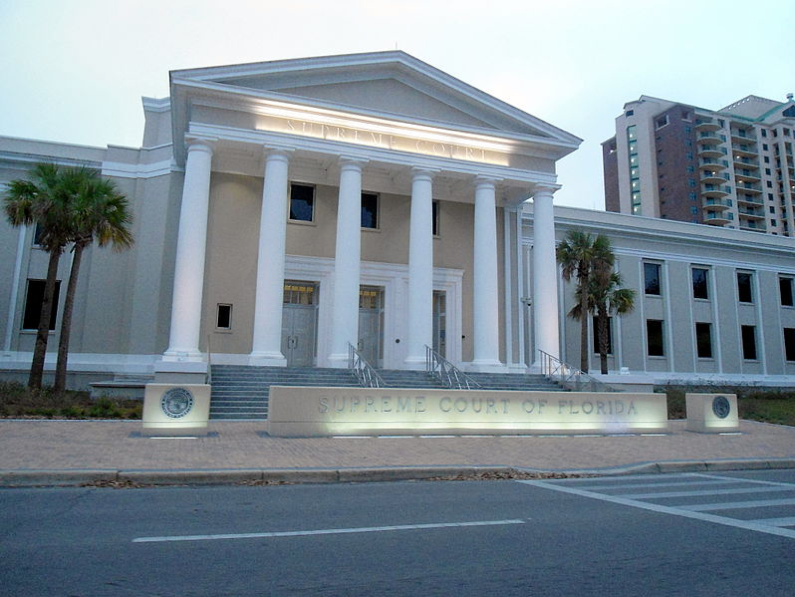Florida’s Supreme Court rulings have broadened the interpretation and use of the death penalty. This year, four decisive cases have dismantled legal requirements that set high standards for a death penalty sentence and reduced protections for defendants who face capital punishment.
The five judicial appointments that Governor Ron DeSantis made to the highest court in the state during his tenure have impacted judicial precedent regarding criminal justice.
It started on Jan. 23, 2020, when the court ruled that they erred in the 2016 decision of Hurst v. State.
In Hurst v. State, the Florida Supreme Court agreed with the U.S. Supreme Court ruling in Hurst v. Florida, which held that a jury must be unanimous in deciding if someone convicted of murder should be sentenced to death.
Prior to Hurst, a simple 7-5 majority was the necessary threshold to recommend a death sentence in Florida. With Hurstin effect, a unanimous vote was required for a death sentence; this change forced the legislature to change the law after the ruling, bringing Florida into the majority of states that require a unanimous jury to implement the death penalty.
However, Florida may become an outlier again when it comes to the death penalty: the January 2020 ruling in State v. Poole overturned the need for a unanimous jury.
Charles Canady, the Chief Justice, wrote in the majority “This Court clearly erred in Hurst v. State… Neither Hurst v. Florida, nor the Sixth or Eighth Amendment, nor the Florida Constitution mandates…that the jury recommend a sentence of death.”
Justice Jorge Labarga, the only justice to oppose the ruling, wrote in dissent that “The majority gives the green light to return to a practice that is not only inconsistent with laws of all but one of the 29 states that retain the death penalty, but inconsistent with the law governing the federal death penalty.”
The dismantling of protections continued when the court ruled in two decisive cases in May 2020.
In the first case, Bush v. State, the court eliminated a rule requiring lower courts to apply additional scrutiny to cases where evidence of guilt is entirely circumstantial.
Circumstantial evidence relies on an inference to connect it to a conclusion. A suspect running from the scene of a crime with a possible weapon is circumstantial evidence. Direct evidence is a witness testifying seeing the suspect shoot or harm the hypothetical victim.
The elimination of extra scrutiny on circumstantial evidence limits capital defendants’ protection as it lowers the threshold for the death penalty as the most severe punishment for a conviction.
Just a week later after Bush v. State, the court ruled in Phillips v. State, which established that the current for evaluating whether a defendant is intellectually disabled should not be applied after the fact occurred.
Since 2002, there has been a ban on executing intellectually disabled defendants as the U.S. Supreme Court ruled it unconstitutional. However, the ruling left it to the individual states to come up with their own methods to determine if a defendant is intellectually disabled.
Florida’s system was flawed. In 2014, the U.S. Supreme Court ruled that Florida’s system for determining intellectual disability was unconstitutional. The assessment did not account for the high margin of error when testing for possible disabilities.
As a result, the Florida Supreme Court ruled two years later that the U.S. Supreme Court changes could be applied retroactively, meaning that cases where defendants were incorrectly assessed on trial for the intellectual disability could appeal.
Phillips v. State got rid of the retroactive ruling and any possibility for an appeal to those still on death row.
Six months after the Bush and Phillips rulings, the Florida Supreme Court removed proportionality review for death penalty cases in Lawrence v. Florida.
Proportionality review is a legal practice where a death penalty case is compared with previous cases to determine whether the given death sentence is “excessive” or “disproportionate.” 15 out of the 28 states who still have the death penalty use proportional review.
This practice is critical for when death penalty cases are going through the appeals process.
Despite the court’s recent backtracking on legal precedent surrounding the death penalty protections, the rulings on these four cases ultimately chart a new course for how Florida views and applies capital punishment in the future.
Featured Image: Outside façade of Florida’s Supreme Court. Unmodified photo by Brandon Rush used under a Creative Commons license. (https://bit.ly/3bFIU6U)
Check out other recent articles from the Florida Political Review here.





